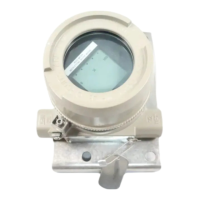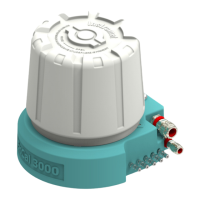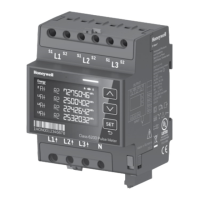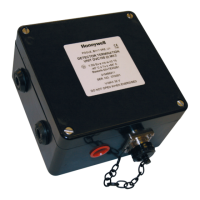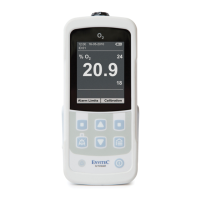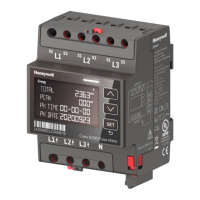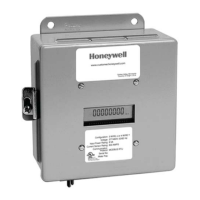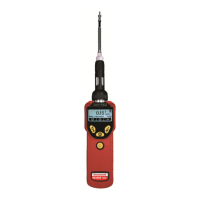
Do you have a question about the Honeywell MiniRAE 3000+ and is the answer not in the manual?
| Sensor Type | Photoionization Detector (PID) |
|---|---|
| Gas Detected | Volatile Organic Compounds (VOCs) |
| Measurement Range | 0 to 15, 000 ppm |
| Lamp Energy | 10.6 eV |
| Battery Type | Rechargeable Lithium-ion |
| Operating Temperature | -20°C to 50°C (-4°F to 122°F) |
| Operating Humidity | 0% to 95% relative humidity (non-condensing) |
| Response Time (T90) | <3 seconds |
| Dimensions | 25.5 x 7.6 x 6.4 cm (10.0 x 3.0 x 2.5 in) |
| Weight | 26 oz (738 g) |
| Alarm | 95 dB at 30 cm, flashing red LED, and on-screen indication |
| Display | Backlit LCD with bargraph and numeric display |
Register your product online to receive notifications and benefits.
Details intrinsic safety approvals and certifications for the instrument.
Essential safety warnings and precautions for operating the instrument.
Important information and warnings to read before using the device.
Guidelines for proper disposal of the product at the end of its life.
Lists all accessories included with the instrument.
Highlights the main functionalities and benefits of the PID monitors.
Describes the main components and physical attributes of the instrument.
Instructions for charging a separate rechargeable Li-ion battery.
Steps for removing and replacing the instrument's Li-ion battery.
Explains the low battery indicator and required actions.
Details about the internal clock battery and its replacement.
Information on data retention when the instrument is powered down.
Information on using the alkaline battery pack with the instrument.
Step-by-step guide to power on the PID monitor.
Step-by-step guide to power off the PID monitor.
Explains the various elements displayed on the instrument's screen.
Describes the meaning of different icons shown on the display.
Procedures for powering on the instrument and its self-tests.
Procedures for powering off the instrument.
How to configure or use the automatic zero calibration feature.
Instructions for using the instrument's integrated flashlight.
Details on operating modes for MiniRAE 3000+ and ppbRAE 3000+.
Information on the dual functionality of the UltraRAE 3000+ monitor.
How to perform measurements for specific compounds using tubes.
Outlines the sequence of steps for compound-specific measurements.
Detailed steps for setting up and conducting a measurement for specific compounds.
Default settings and operation for basic user and hygiene modes.
Table summarizing alarm messages, conditions, and signals.
Default alarm settings and calibration gas information for different models.
Procedure to test the instrument's audible and visible alarms.
Information on the instrument's internal sampling pump.
Details on the LCD backlight for improved visibility.
Introduction to the datalogging feature and stored information.
Lists all accessories included with the instrument.
Detailed procedure for performing zero and span calibration.
Steps for performing a second span calibration for enhanced accuracy.
Guide on conducting daily functional checks (bump tests) of the instrument.
How to manually start and stop datalogging on the instrument.
Capturing single data snapshots at chosen moments.
Navigating basic functions in hygiene mode.
Using advanced features in hygiene mode.
Operating in basic mode with search functionality.
Utilizing advanced features in search mode.
Procedure to access the diagnostic mode for servicing.
Steps to adjust pump performance parameters.
Procedure to test the instrument's humidity sensor.
Guide for transferring logged data from the instrument to a computer.
Steps to update the instrument's firmware using a PC.
Procedures for recharging and replacing the instrument's battery.
Procedures for cleaning and replacing sensor and lamp components.
Detailed steps for cleaning the PID sensor module.
Instructions for cleaning the lamp housing or replacing the lamp.
Methods to identify the installed lamp type.
Information on pump maintenance and replacement.
General guidelines for cleaning the instrument's exterior.
Technical specifications for the MiniRAE Lite+ model.
Technical specifications for the MiniRAE 3000+ model.
Technical specifications for the ppbRAE 3000+ model.
Technical specifications for the UltraRAE 3000+ model.
Solutions for issues related to the instrument not powering on.
Guidance for resolving lost password problems.
Troubleshooting steps for high or low measurement readings.
Solutions for when the instrument's buzzer is not working.
Troubleshooting steps for issues with low sample flow.

